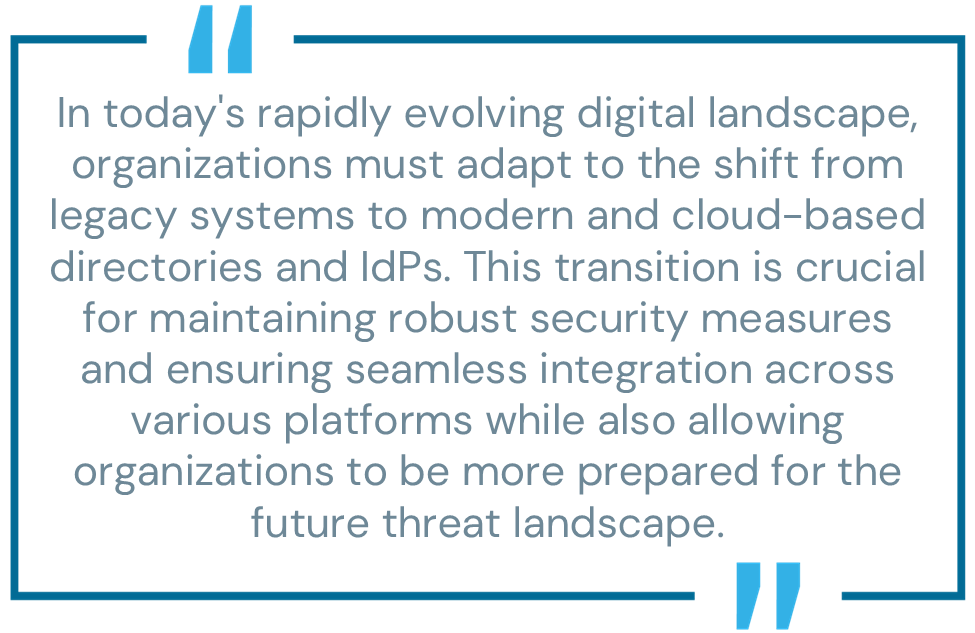
Linux servers have become widely adopted across organizations of all sizes. However, the frustrations of integrating these servers have left organizations struggling to implement strong security procedures, which cyberattacks have exploited for years. For instance, the “perfctl” malware family has been targeting Linux servers and attempting to escalate privileges for over three years.
The Importance of Securing Linux Servers
Server attacks that gain admin access and escalate privileges allow attackers to move undetected throughout an organization, infiltrating systems, stealing data and causing significant downtime and subsequent long-term aftereffects. Securing identities is crucial to protecting Linux servers from these threats. However, the lack of native capabilities for central management of user identities on Linux servers complicates this task. Without centralized management, Linux machines would have separate local accounts for each user, leading to identity and privilege sprawl and creating more opportunities for attackers.

The Shift to Modern and Cloud-based Directories
Over the years, many organizations have relied on Active Directory (AD) bridging to help integrate non-Windows systems with Active Directory as a central location for user management. However, organizations have begun to transition to modern and cloud-based directories and identity providers (IdPs) due to the enhanced security, flexibility and scalability, cost efficiency and adaptability to help meet current demands and prepare for future growth. With this transition, they face similar integration challenges with their Linux servers.
The lack of native capabilities for central management of user identities on Linux servers creates these challenges, including:
- Identity and privilege sprawl. As mentioned previously, this issue creates serious administration overhead, as every Linux machine would have separate accounts for the user. Finding, maintaining and locking down all those accounts would most likely be impossible, opening organizations up to security risks.
- Stalled IAM modernization programs. Organizations are hindered in adopting innovative identity management practices, such as Zero Trust, when they cannot be flexible with their Identity and Access Management (IAM).
- Reduced security posture through legacy authentication methods.
This shift calls for modern tactics to help tackle the security risks of identity and privilege sprawl on Linux servers.
The Modern Approach to Directory Bridging
To ensure Linux servers remain secure during this transition, organizations need a new approach to bridging and functionalities:
1. Centralized Management
Centralizing the management of user access, authentication and authorization is still essential. Organizations need a solution that is adaptable beyond AD to succeed in bridging with modern and cloud-based directories.
2. Flexibility
A flexible bridging system that is directory and IdP agnostic can adapt to your changing identity management needs. This flexibility can help you avoid vendor lock-in and allows you to update and enforce policies across your different environments easily.
3. Strong Authentication
Multi-factor authentication (MFA) is crucial and usually part of a bridging solution. Enhancements like passwordless authentication can offer an additional layer of protection in an era where users have numerous passwords that can be exploited.
4. Integration with PAM
Integrating your bridging system with privileged access management (PAM) can accelerate your modernization program. This added layer of security enables your organization to extend Zero Trust and identity security over your Linux machines.
Modernize Safely: Embracing Advanced Identity Management
In today’s rapidly evolving digital landscape, organizations must adapt to the shift from legacy systems to modern and cloud-based directories and IdPs. This transition is crucial for maintaining robust security measures and ensuring seamless integration across various platforms while also allowing organizations to be more prepared for the future threat landscape.
A modern approach to directory bridging involves providing a centralized solution to manage, authenticate and authorize user access to Linux servers. This strategy enables organizations to extend Zero Trust and identity security principles to their Linux servers, ensuring these critical systems are protected against unauthorized access and potential threats.
Organizations can effectively bridge the gap between traditional and modern infrastructures by adopting enhanced flexibility, strong authentication support and the ability to integrate with existing security tools. This holistic approach can strengthen security and support the continuous evolution of cybersecurity practices.
Discover how CyberArk Identity Bridge can help streamline your Linux server integration and help enhance your organization’s cybersecurity strategy. Learn more about enabling cloud migration for Linux servers.
Allison Senatore is a product marketing manager at CyberArk.























